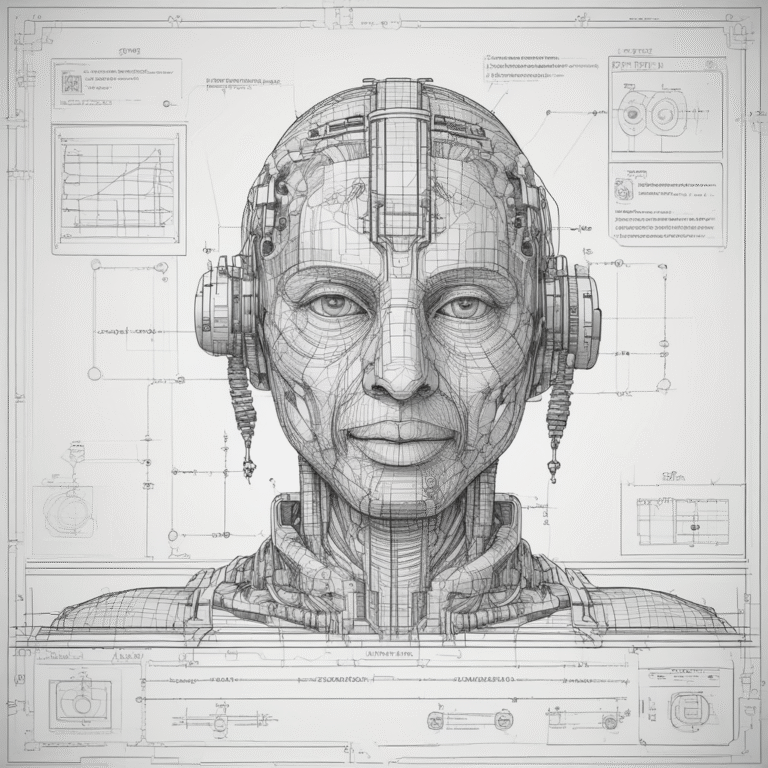What is a Model Card Report? Your Guide to Responsible AI
A model card report is a crucial document that supports responsible AI by providing transparency and accountability in the development and deployment of AI models. With new regulations like the EU AI Act on the horizon, the era of deploying AI without rigorous documentation is over. Regulators, customers, and stakeholders are demanding proof that AI models are fair, safe, and transparent. Simply stating that an AI works is no longer sufficient; organizations must demonstrate their processes and results.
This is where model cards become essential. For any enterprise leader, understanding what a model card report entails is now a critical part of compliance strategy. It serves as the official record of a model’s purpose, usage, testing, and limitations, providing the evidence needed to satisfy auditors and build trust.
Key Takeaways
- Treat Model Cards as essential tools for transparency: They provide a standardized report on an AI’s purpose, performance, and limitations, forming the foundation for trust with stakeholders.
- Standardize your implementation process: Create a clear template for all teams, write for both technical and business audiences, and integrate documentation directly into the development workflow.
- Use Model Cards to strengthen governance and simplify compliance: They offer structured documentation to manage risk and align technical and business teams, and automating their creation can streamline the process.
What Is a Model Card?
A model card can be thought of as a cross between a nutrition label and an instruction manual for an AI model. As machine learning models take on impactful tasks in areas like hiring and lending, understanding their workings becomes essential. A model card provides a clear, standardized report detailing what a model is intended to do, how it should be used, and its performance in various scenarios.
This transparency is foundational for responsible AI. By documenting a model’s purpose, limitations, and potential biases, organizations create a record that supports accountability and builds trust with users and regulators. It communicates the story of the AI from its initial design to its real-world application.
What It Is and Why It Matters
At its core, a model card is a structured overview of how an AI model was designed and evaluated. It is a key artifact in any responsible AI framework, aiming for transparency in development. By clearly outlining a model’s components and performance metrics, model cards help stakeholders understand its strengths and weaknesses, especially in high-stakes decisions, like predicting health risks or financial outcomes.
The Anatomy of a Model Card
A comprehensive model card acts as a standardized guide, similar to an instruction manual for AI. While formats may vary, a typical model card structure includes:
- Model’s name and version
- Intended use cases
- Model architecture details
- Monitoring guidelines
- Training data used
- Key performance metrics
- Known limitations or ethical considerations
Why Your AI Needs Model Cards
Model cards are a fundamental component of an AI governance strategy. They help satisfy compliance requirements for laws like the EU AI Act and Colorado SB205. These documents are not just another piece of documentation; they are active tools that bring clarity and structure to AI systems. For organizations serious about deploying AI responsibly, especially in fields like HR and finance, model cards are indispensable.
Build Transparency and Trust
Transparency is the currency of trust, and model cards facilitate this by providing structured overviews of an AI model’s purpose, design, and performance. By documenting how a model was created and evaluated, stakeholders—from developers to regulators—gain insights into its capabilities and limitations. This transparency demystifies AI, making it more approachable and reliable.
Drive Accountability in Development
Model cards introduce discipline into the AI development lifecycle. They require a standardized report that prompts teams to think critically about their choices. This process drives accountability by creating a clear record of performance metrics, especially across different demographic groups, helping identify and address potential biases.
How to Create an Effective Model Card
Creating a model card is an exercise in clarity and responsibility. A well-constructed model card serves as a central source of truth for understanding an AI model. It should balance comprehensive technical details with accessible language to ensure it meets the needs of both technical and non-technical audiences.
Write for Clarity and Accessibility
A model card should communicate crucial information clearly and concisely. It should be comprehensive enough to address the model’s purpose, usage, performance, and limitations, while remaining accessible to a broad audience. Avoid overly technical jargon and explain specific terms in layman’s language.
Create a Framework for Evaluation
Model cards should establish a standardized framework for evaluating an AI model’s performance and limitations. They provide details on how a model performs under various conditions, creating a baseline for ongoing monitoring and validation, especially for risks like bias.
Common Challenges of Implementation
Implementing model cards can present challenges, including the lack of standardization and the need to balance technical details with simple language. These hurdles require careful planning and strategy to overcome.
The Lack of Standardization
The absence of universal standards for model cards can lead to inconsistencies in documentation. Without a clear framework, model cards may vary in detail and completeness, undermining their purpose.
Balance Technical Details with Simple Language
Model cards must cater to diverse audiences. Finding a balance between enough technical detail for expert review and clarity for non-technical stakeholders is crucial for effective communication.
How to Overcome Implementation Hurdles
To effectively implement model cards, focus on integrating them into your workflow, using the right tools, and maintaining a commitment to transparency and accountability.
Integrate Cards into Your Workflow
Model cards should not be an afterthought created just before deployment. They must evolve with the model and be updated whenever significant changes occur.
Use the Right Tools and Frameworks
Manually creating model cards for every model is not scalable. Automation can streamline the process, helping teams focus on developing models while ensuring necessary transparency reporting.
The Future of Model Cards
Model cards are quickly becoming a cornerstone of responsible AI strategy. As organizations scale their AI use, these documents will play a critical role in managing risk and complying with new regulations. Their evolution will see them integrated directly into the AI lifecycle, driven by emerging regulations and the need for comprehensive governance frameworks.
Adapting to New AI Regulations
As new AI regulations emerge, model cards are shifting from a “nice-to-have” to a “must-have.” They provide standardized reports that help organizations meet compliance obligations and demonstrate a commitment to responsible AI.
Integrating with AI Governance
Model cards are most powerful when woven into an organization’s AI governance framework. They should be living documents that connect development, risk management, and compliance, providing a clear record for every model deployed.










